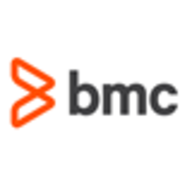


BMC Helix Cloud Security and Lacework FortiCNAPP are cloud security solutions. Lacework FortiCNAPP is often seen as superior due to its robust features, making its higher cost justifiable.
Features: BMC Helix Cloud Security offers real-time compliance monitoring, automated remediation, and effective governance with user-friendly dashboards. Lacework FortiCNAPP provides comprehensive threat detection, enhanced analytics, and security compliance features across complex environments.
Room for Improvement: BMC Helix Cloud Security could enhance its threat detection capabilities, offer more extensive analytics, and improve integration with third-party services. Lacework FortiCNAPP may simplify its deployment process, reduce alert noise, and enhance user support documentation for faster issue resolution.
Ease of Deployment and Customer Service: BMC Helix Cloud Security features straightforward deployment and robust customer support, facilitating seamless integration. Lacework FortiCNAPP, while having solid support, requires more resources for deployment due to its complexity.
Pricing and ROI: BMC Helix Cloud Security is cost-effective, offering a lower initial investment with a faster ROI, appealing to budget-conscious businesses. Lacework FortiCNAPP's higher cost is seen as a worthwhile long-term investment due to its advanced threat defense capabilities.



SentinelOne Singularity Cloud Security protects cloud workloads, offering advanced threat detection and automated response. It integrates seamlessly with cloud environments and secures containerized applications and virtual machines against vulnerabilities.
SentinelOne Singularity Cloud Security is renowned for its efficiency in mitigating threats in real-time. The platform integrates effortlessly with existing cloud environments, ensuring robust cloud security management with minimal manual intervention. Securing containerized applications and virtual machines, it excels in threat intelligence and endpoint protection. However, improvements are needed in performance during high workload periods, and more integrations with third-party tools and better documentation would be beneficial. Users often find the installation process complex, support response times slow, and the dashboard's navigation unintuitive.
What are the key features of SentinelOne Singularity Cloud Security?In specific industries, SentinelOne Singularity Cloud Security is implemented to safeguard critical data and infrastructure. Organizations in finance, healthcare, and technology depend on its real-time threat detection and automated response to protect sensitive information. Its ability to secure containerized applications and virtual machines is particularly valuable in dynamic environments where rapid scaling is necessary.
BMC Helix Cloud Security is a SaaS tool designed to help organizations reduce compliance and security lapses resulting from next-gen container and cloud technologies. The solution offers a fully transparent, user-friendly view of all compliance data gathered throughout container resources, cloud, and data centers. BMC Helix Cloud Security can be used to insert compliance inquiries precisely in DevOps workflows for immediate assessment in relation to critical “go, no-go” conclusions throughout the entire workflow.
BMC Helix Cloud Security offers enterprise organizations a unique compliance solution with robust functionalities to concentrate on numerous use processes that may interfere with digital transfigurations, such as:
BMC Helix Cloud Security is SaaS, which makes it a very flexible solution. It is able to integrate seamlessly with many of today’s enterprises’ demands. BMC Helix Cloud Security can easily perform as a policy-as-code (YAML) based protocol language, open RESTful APIs, or by seamlessly compiling extensible data connectors.
Many of today's enterprise organizations must comply with numerous policies and regulations to maintain effective operations. BMC Helix Cloud Security ensures an enterprise organization is able to satisfy regulatory standards such as Sarbanes-Oxley (SOX) Act, Defense Information System Agency (DISA), or any other stringent government or internal organizational compliance standards. The solution has a comprehensive compliance policy that utilizes mode-two capabilities and will ensure that an enterprise organization will greatly minimize or even negate the threat of ransomware and data breaches throughout its network.
BMC Helix Cloud Security will also see that container and container hosts are configured correctly and will then regularly audit to ensure compliance at the three important levels of compliance - images, daemon configuration, and host configuration.
BMC Helix Cloud Security is designed to identify vulnerabilities by dissecting and thoroughly investigating compliance data for container and cloud resources and delivering the outcomes through a friendly, easy-to-understand dashboard. The solution can also provide support for unique or custom sources, provided that data is in a JavaScript Object Notation (JSON) format.
BMC Helix Cloud security is also able to help discover and minimize vulnerabilities created by new services, objects, and resources instituted by containers and public clouds. These can sometimes be forgotten, creating a tremendous risk to an organization. BMC Helix Cloud Security will ensure these new services will be carefully and continually monitored to ensure industry and government standards and regulations are not being compromised. The solution is continually dissecting data and then will deliver outcomes in a dynamic, easy-to-understand dashboard.
BMC Helix Cloud Security offers a user-friendly, robust, complete compliance strategy to ensure organizations maintain the highest levels of productivity and profitability while negating the risk of any type of compliance vulnerabilities.
Lacework FortiCNAPP provides robust cloud security, combining vulnerability management and multi-cloud insight with user-friendly controls, machine learning detection, and compliance support.
Lacework FortiCNAPP specializes in cloud security by merging machine learning anomaly detection with agent-based vulnerability management to offer detailed alerts and compliance reports. Its comprehensive approach allows continuous monitoring across AWS and Kubernetes, providing insights from an attacker's perspective. The platform offers automation and seamless Slack integration, facilitating collaborative and efficient cloud security management. Users value its ability to handle multi-cloud environments and scan IAC scripts, configurations, and compute nodes across AWS and GCP.
What are the key features?Organizations across sectors leverage Lacework FortiCNAPP for cloud security, focusing on compliance, security posture, and vulnerability management. It is widely used for monitoring AWS and Kubernetes environments, scanning IAC scripts, configurations, and securing compute nodes. It supports multi-cloud security posture management and log ingestion, enabling companies to maintain strong cloud infrastructures without dedicated security layers.
We monitor all Cloud Workload Protection Platforms (CWPP) reviews to prevent fraudulent reviews and keep review quality high. We do not post reviews by company employees or direct competitors. We validate each review for authenticity via cross-reference with LinkedIn, and personal follow-up with the reviewer when necessary.